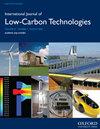广东省工业部门经济增长、能源消耗和二氧化碳排放的解耦分析
IF 2.3
4区 工程技术
Q3 ENERGY & FUELS
引用次数: 1
摘要
工业碳排放是中国碳排放的主要部分,因此工业碳减排是实现“双碳”目标的重要工具。本文构建了一个Tapio模型,将总脱钩指标分解为节能脱钩指标和减排脱钩指标,以期更深入地揭示广东省各地级市工业部门经济增长与二氧化碳排放脱钩指标变化的原因和机制,以及利用聚类分析进一步探讨三个五年计划期间工业部门节能减排效果的变化。研究结果表明:(1)广东省工业部门节能减排的总体效率有所提高,但不同城市之间的效率差异较大;(2) 由于技术不成熟,广东省工业部门的能源结构变化不大。在此基础上,本文提出了相应的政策建议。本文章由计算机程序翻译,如有差异,请以英文原文为准。
Decoupling analysis of economic growth, energy consumption and CO2 emissions in the industrial sector of Guangdong Province
Industrial carbon emissions are the main part of China's carbon emissions, so industrial carbon emission reduction is an important tool to achieve the "double carbon" target. This paper constructs a Tapio model to decompose the total decoupling indicators into energy saving decoupling indicators and emission reduction decoupling indicators, with a view to revealing more deeply the reasons and mechanisms for the changes in the decoupling indicators between economic growth and carbon dioxide emissions in the industrial sector of each prefecture-level city in Guangdong Province, as well as using cluster analysis to further explore the changes in the effect of energy saving and emission reduction in the industrial sector over the three five-year plans. The conclusions showed that: (1) the overall efficiency of energy saving and emission reduction in the industrial sector of Guangdong Province has improved, but there are large differences in efficiency between different cities; (2) the energy structure of the industrial sector in Guangdong Province has changed little due to immature technology. Based on the above findings, this paper puts forward corresponding policy recommendations.
求助全文
通过发布文献求助,成功后即可免费获取论文全文。
去求助
来源期刊

International Journal of Low-carbon Technologies
Engineering-Architecture
CiteScore
4.30
自引率
4.30%
发文量
106
审稿时长
27 weeks
期刊介绍:
The International Journal of Low-Carbon Technologies is a quarterly publication concerned with the challenge of climate change and its effects on the built environment and sustainability. The Journal publishes original, quality research papers on issues of climate change, sustainable development and the built environment related to architecture, building services engineering, civil engineering, building engineering, urban design and other disciplines. It features in-depth articles, technical notes, review papers, book reviews and special issues devoted to international conferences. The journal encourages submissions related to interdisciplinary research in the built environment. The journal is available in paper and electronic formats. All articles are peer-reviewed by leading experts in the field.
 求助内容:
求助内容: 应助结果提醒方式:
应助结果提醒方式:


